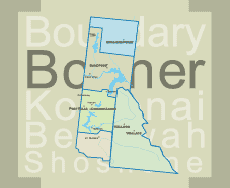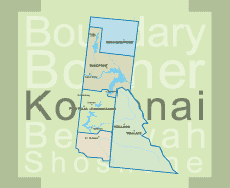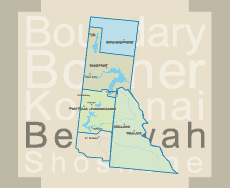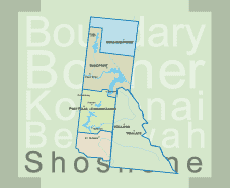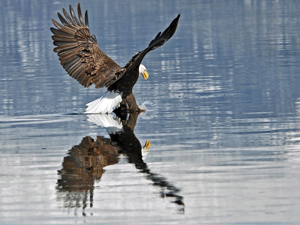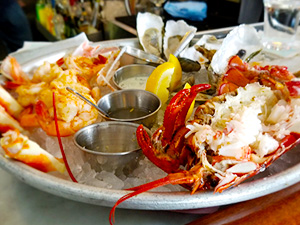Idaho whitewater rafting
Idaho whitewater rafting offers more whitewater river miles than anywhere in the lower 48 states and scenery unlike any other with more than 3,100 miles of whitewater rivers. Trips are offered on a dozen rivers, including the Snake through North Central Idaho - Hells Canyon (the deepest gorge in North America) and the main Salmon, dubbed the “River of No Return” by early explorers. Hells Canyons is breathtaking. It is often said that the rapids are second to the awe-inspiring feeling of being deep in a canyon with steep walls resembling those found in the Grand Canyon. If you are looking for the complete rafting experience, then explore the many Idaho whitewater rafting trips.
What a thrill to be bumping through rapids with names like The Grim Reaper, County Coroner, Bloody Mary, Killer Fang and Ten-Pin Alley, named because the river bounces riders around rocks the way a bowling ball bounces pins.
You don’t have to be a thrill seeker to enjoy the sport as many outfitters have trips suitable for children. Idaho whitewater rafting trips vary from one to seventeen day adventures, due to the remoteness of the rivers. Many trips are designed for families looking to expose their children to the wonders of the Great Outdoors. It is not uncommon to see eagles, bighorn sheep and other wildlife. There is also great fishing available. Some feature camping along the water; others include overnight stays at comfortable lodges. Some trips combine boating with hiking, biking and horseback riding; others cater to hunters and fishermen.
One of the most stimulating rafting trips is on the Lochsa (pronounced lock-sah) which rises near the Montana border, runs west along U.S. Highway 12, then joins the Selway to form the Clearwater River east of Lewiston. The Lochsa,(a Shoshone word for “rough water”) one of the state’s wilder rivers with mostly Class III and Class IV rapids (Class V is considered unrunnable), many other rivers offer the fun of boating without as much risk, or sweat.
On the Lochsa, the minimum age is 15, primarily because everybody has to be able to paddle. The paddling, in fact, is somewhat difficult as you are supposed to do it in unison.
Bruneau River Rafting Trips (Class III-IV):
The turquoise waters of the Bruneau River run for 40 miles through a tall canyon of red rock reminiscent of Bryce and Zion National Parks. River trips last four days with beginner – intermediate Class III-IV rapids.
Clearwater River Rafting Trips – Middle Fork (Class I-II):
A relaxing scenic float through the Selway-Bitterroot Wilderness. The Clearwater River offers great wildlife viewing and mild whitewater.
Hells Canyon Rafting Trips – Snake River (Class III):
The Hells Canyon rafting on the Snake River consists of beginner – intermediate Class III-IV rapids. River trip options include rafting 34 miles in three days or 82 miles in six days.
Lochsa River Rafting Trips (Class IV):
Over 40 rapids in 20 miles makes the Lochsa River one of the best options for adventure-seekers anywhere in the United States. This free-flowing, springtime run is one of America’s first Wild and Scenic rivers. On the Lochsa, the minimum age is 15, primarily
because everybody has to be able to paddle. The paddling, in fact, is somewhat difficult as you are supposed to do it in unison.
Moyie River Rafting Trips (Class II-III):
Just a short distance from the charming town of Sandpoint, Idaho, the Moyie River is a delightful and fun one-day rafting trip. Bouncy waves are a good introduction to whitewater and the scenery is stellar.
Salmon River Rafting Trips (Class III-IV):
There a several multi-day trips offered on both the Main Salmon River and the Middle Fork of the Salmon River. Flowing through the remote Frank Church Wilderness, the Salmon is known for excellent fishing, wildlife, and hotsprings.
Selway River Rafting Trips – Lower Section (Class I-II):
A free-flowing mellow springtime run, the Lower Selway is a spectacular scenic rafting trip with a few mild rapids. Wildlife viewing, birding, and fishing are excellent on the Lower Selway River.
St. Joe River Rafting Trips (Class II-III):
The St. Joe River is located in the panhandle region and runs through one of Idaho’s most lush and spectacular forests. The whitewater on the St. Joe is fun and exciting and is great for beginners or experienced rafters.
Print
Email

